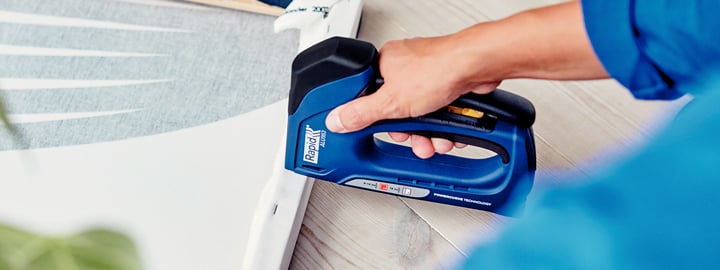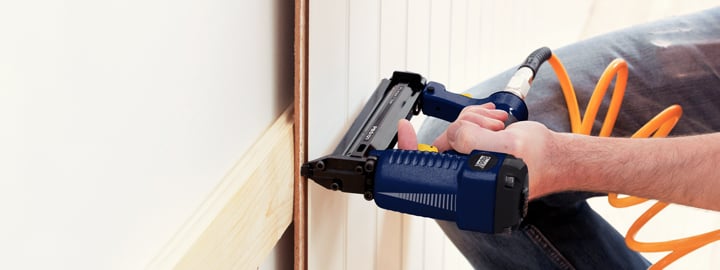Choosing the right staple
Staple guns are useful in everything from major construction projects to interior design and decoration. To obtain a really good result, you first need to choose a staple that suits the material you are going to fasten. Next, choose a staple gun that has the right characteristics for the job.
Choose the correct staple for the material
Finewire staple - for fabric, textile and leather
- The best option for fastening thin materials, such as reupholstering furniture or tensioning canvas in a frame.
- Small, thin and discreet. Does not leave large holes or cracks in the material.
Click on the icon to see our staples:
Flatwire staples – for corrugated cardboard, plastic sheeting and carpets
- The right choice for fastening materials such as plastic foil, insulating foil, corrugated cardboard or carpets.
- Broad back to hold material firmly in place.
Click on the icon to see our staples:
Narrow crown staples – for floors, panels, trims and other carpentry
- Effective for fastening floors, panelling and skirting boards of wood or working with other hard materials.
- Has a narrow back and long legs, and therefore fastens deep into the substrate.
Click on the icon to see our staples:
Cable staple - for cables and wires
- Features rounded-back and is suitable for fastening low-voltage cables up to 50 V, such as computer, stereo and telephone cables. Rapid has cable staples for various diameters (4.5 mm and 6 mm).
Click on the icon to see our staples:
Three tips for the right leg length
- The default rule is that the staple should be three times longer than the thickness of the material.
- When fastening in hard wood, the staple should be twice as long as the thickness of the material.
- For thin materials such as plastic foil or fabrics, the staple should be four millimetres longer than the thickness of the material.

Read more:
Guide: Choosing the right staple gun
Guide: Finding staples for staple guns from other manufacturers












